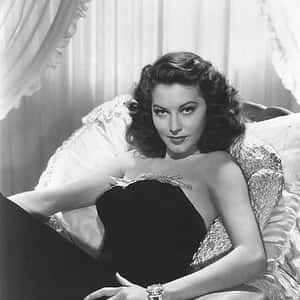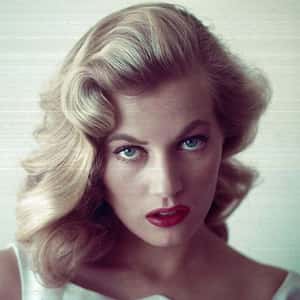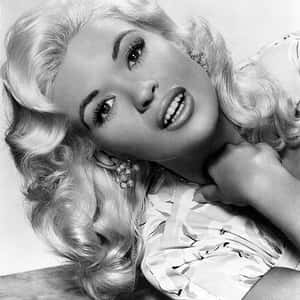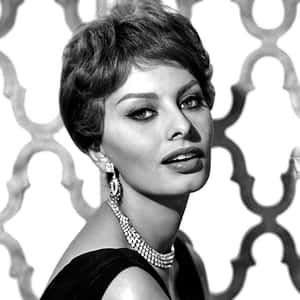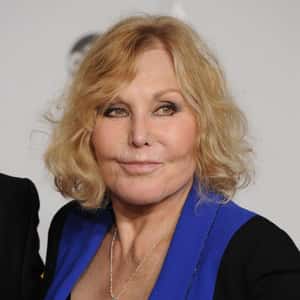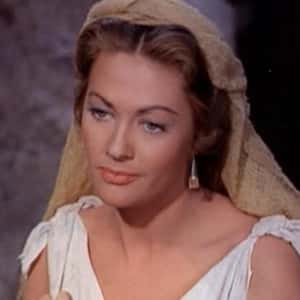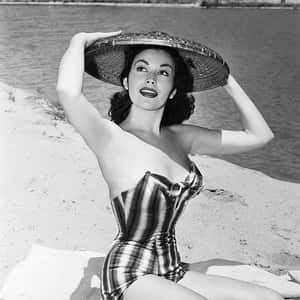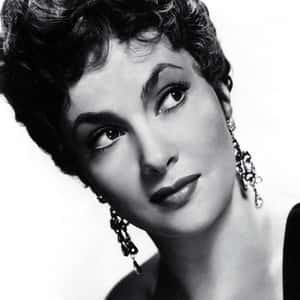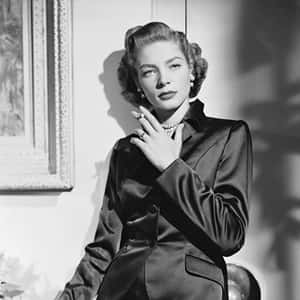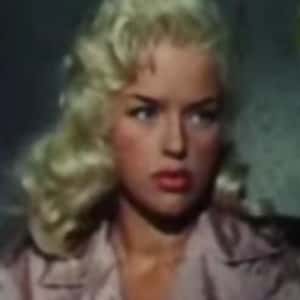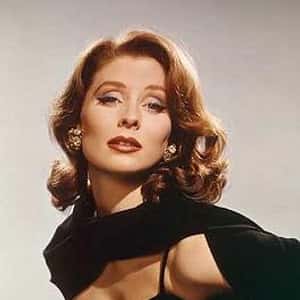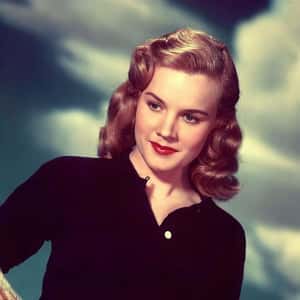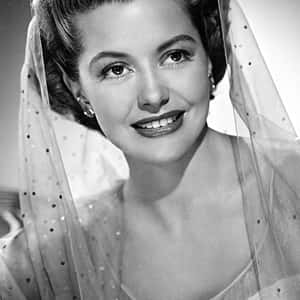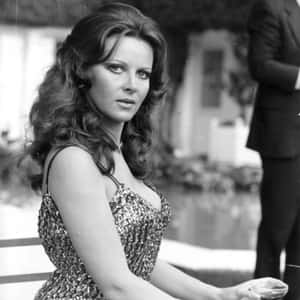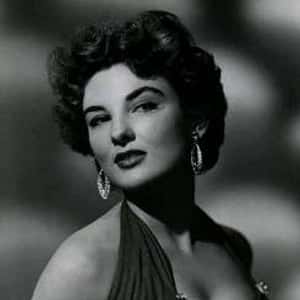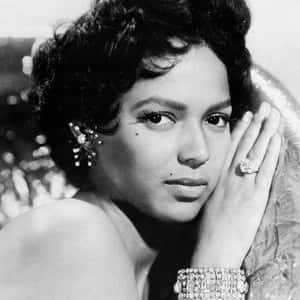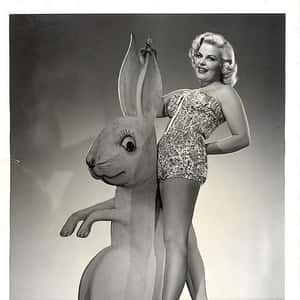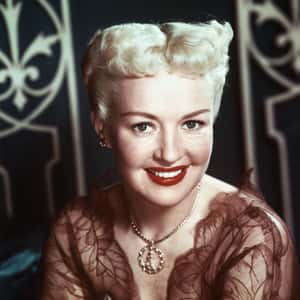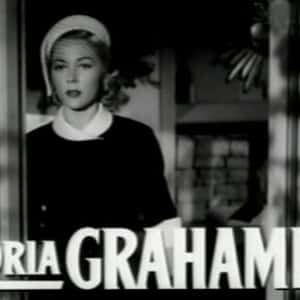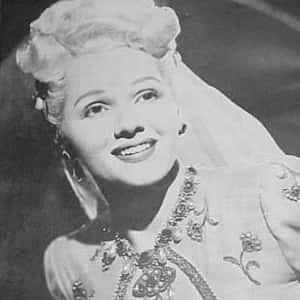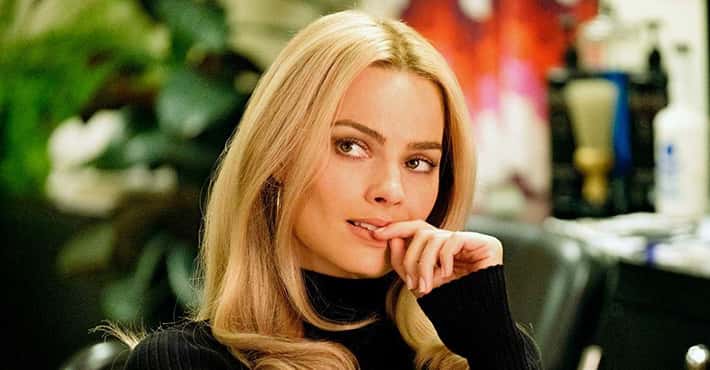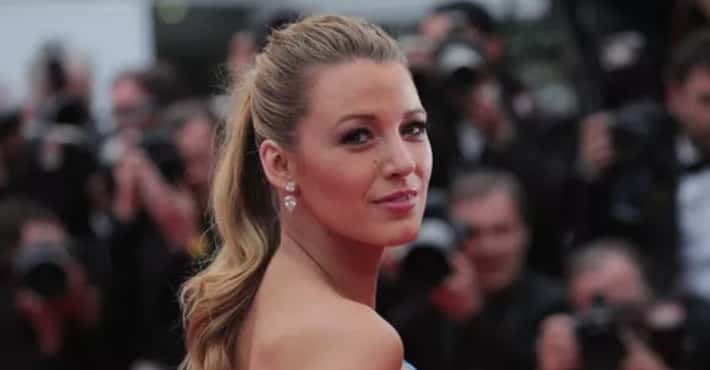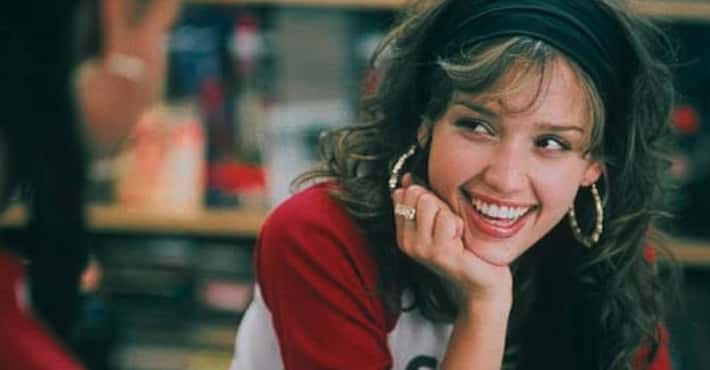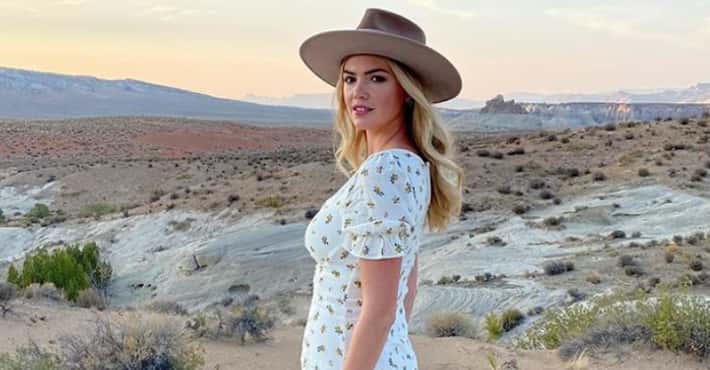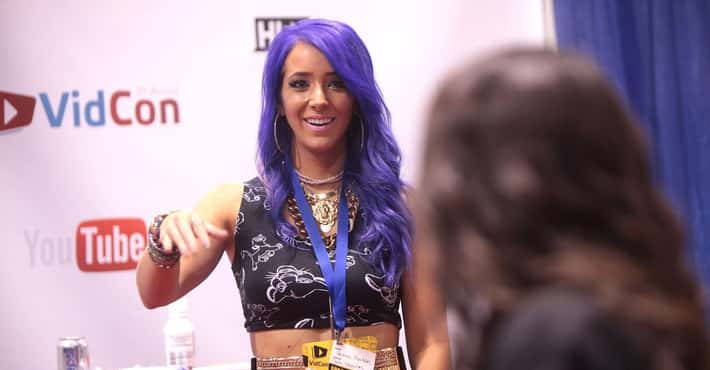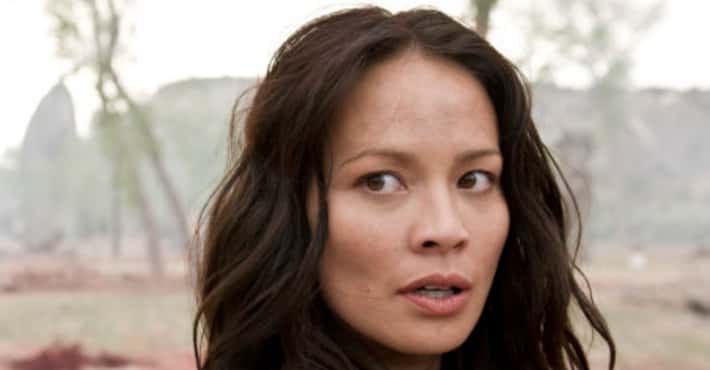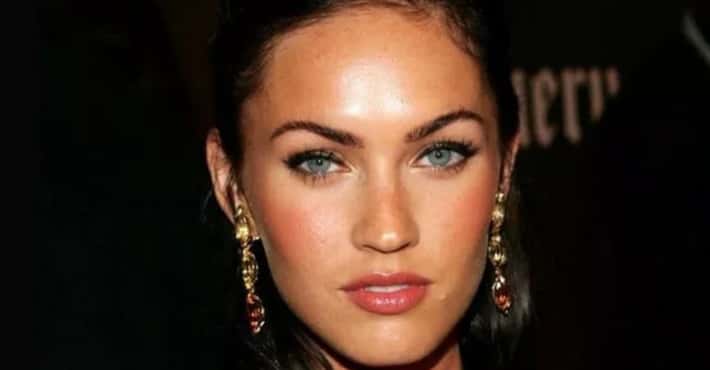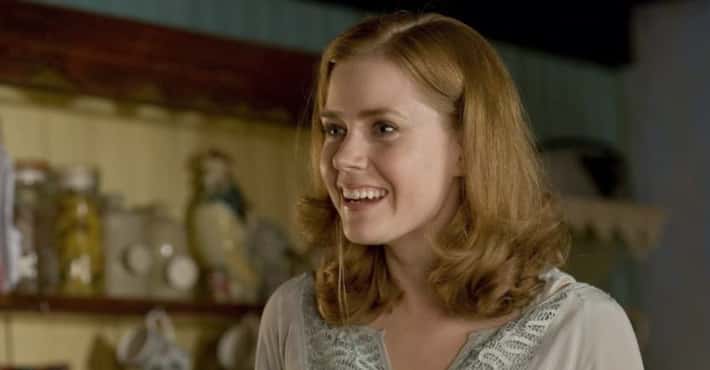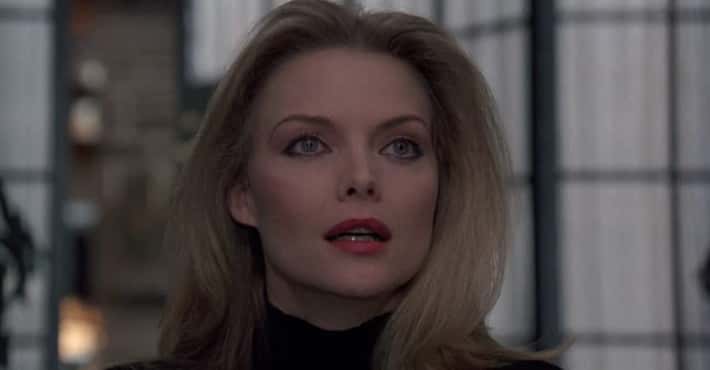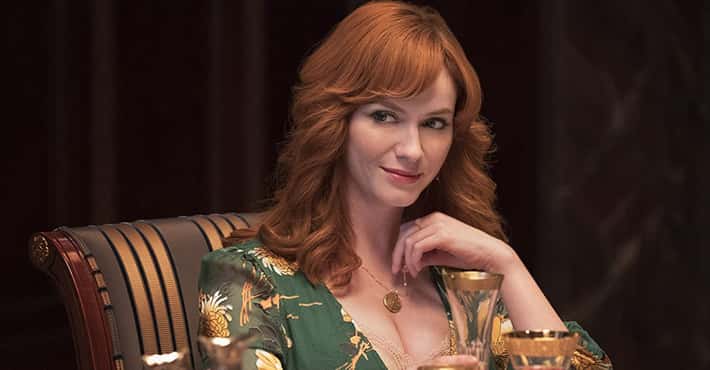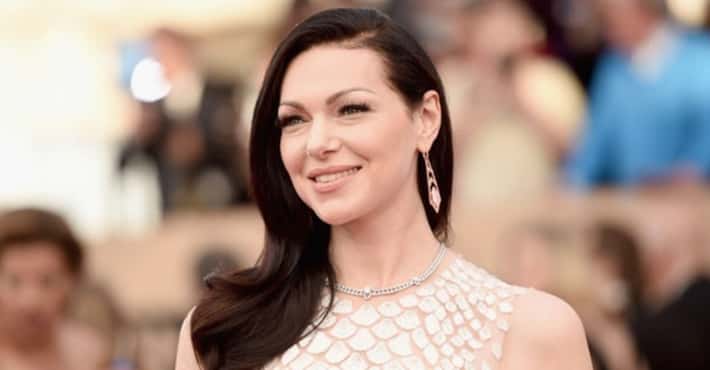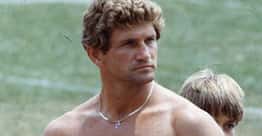The Most Beautiful Pin-Up Girls of the '50s
Ranked By
14.5K votes
3.4K voters
7 reranks
Voting Rules
Vote up the most beautiful vintage pinups.
- 12/24/1922Ava Gardner, born on December 24, 1922, in Smithfield, North Carolina, was a force to be reckoned with in the golden era of Hollywood. With her striking beauty and raw talent, she quickly rose to become one of the most iconic actresses of her time. Her journey from a humble upbringing as the youngest of seven children to the glitz and glamour of Hollywood is nothing short of remarkable. Long before her death on January 25, 1990, Gardner left her mark on the film industry. Gardner's career took off when she signed a contract with Metro-Goldwyn-Mayer (MGM) in 1941. She became known for her compelling performances in a string of successful films throughout the 1940s and 50s. Some of her most recognized roles include her Oscar-nominated performance in Mogambo (1953), alongside Clark Gable, and The Night of the Iguana (1964), directed by John Huston. Her acting prowess, combined with her distinctive allure, made her a beloved figure in Hollywood and beyond. Away from the silver screen, Gardner led a colorful life, marked by high-profile relationships and a spirited personality that often challenged societal norms. She was married three times, most notably to Frank Sinatra, with whom she shared a tumultuous bond. Despite the controversies and struggles that often surrounded her personal life, Gardner remained unapologetically herself, living life on her own terms. Her legacy continues to inspire generations of actresses, embodying the timeless appeal of a true Hollywood star.More Ava Gardner
- #23 of 1,285 onThe Most Beautiful Women Of All Time
- #79 of 348 onThe Best Actresses In Film History
- #377 of 560 onPeople We Wish Were Still Alive
- 06/01/1926Marilyn Monroe, born Norma Jeane Mortenson on June 1, 1926, was an emblematic figure of the silver screen during the mid-20th century. Her early life in Los Angeles was marked by instability and hardship as she spent her childhood in foster homes due to her mother's mental illness. Despite these challenges, Monroe transformed herself from a shy brunette factory girl into a radiant blonde who would become one of Hollywood's most enduring sex symbols. Monroe's acting career took off after signing with Twentieth Century-Fox in 1947. She became known for playing 'dumb blonde' characters but proved her versatility across various genres - from comedy classics such as Some Like It Hot to dramatic roles like that seen in The Misfits. Her talent shone through not just onscreen but also on stage when she studied under Lee Strasberg at the Actors Studio in New York City. However, Monroe's public façade hid personal struggles with depression and substance abuse which eventually claimed her life prematurely at age 36. Yet despite her tragic end, Marilyn Monroe left behind an inimitable legacy that continues to influence pop culture even decades after her demise. Her image remains synonymous with glamor and elegance while her story serves as a poignant reminder of the price paid for fame.
- 09/29/1931Kerstin Anita Marianne Ekberg (Swedish pronunciation: [a²niːta ²eːkbærj] (listen); 29 September 1931 – 11 January 2015) was a Swedish actress active in American and European films. She is best known for her role as Sylvia in the Federico Fellini film La Dolce Vita (1960). Ekberg worked primarily in Italy, where she became a permanent resident in 1964.More Anita Ekberg
- #695 of 1,285 onThe Most Beautiful Women Of All Time
- #388 of 1,104 onThe Most Beautiful Celebrities Of Our Time
- #12 of 24 onThe Most Beautiful Pin-Up Girls of the '60s
- 04/19/1933Jayne Mansfield, born Vera Jayne Palmer on April 19, 1933, was an American actress, singer, and nightclub entertainer who emerged as a major Hollywood sex symbol during the 1950s and early 1960s. She was born in Bryn Mawr, Pennsylvania, and was raised in Dallas, Texas, where she discovered her passion for acting. Despite initial resistance from her parents, Mansfield pursued her dreams, eventually gaining recognition as a leading lady in films like The Girl Can't Help It and Will Success Spoil Rock Hunter? Her blonde bombshell image, comparable to Marilyn Monroe, made her a popular figure in the media. Mansfield's life was not just about glamour and fame; it also had its fair share of trials and tribulations. After a short-lived marriage to her high school sweetheart, Paul Mansfield, she married bodybuilder Mickey Hargitay, with whom she had three children. Her professional life saw highs and lows, with her popularity waning in the 1960s due to a series of box-office flops. Despite these setbacks, Mansfield remained dedicated to her craft, resorting to stage performances and nightclub acts when film offers became scarce. Her resilience and determination were a testament to her love for performing arts. Tragically, Mansfield's life was cut short at the age of 34 in a car accident in 1967. Despite her untimely demise, her legacy in the entertainment industry is enduring. Her flamboyant lifestyle, tumultuous personal life, and tragic death have kept her in public memory long after her passing. Today, she is remembered as one of the definitive symbols of Hollywood glamour and beauty. Her influence can be seen in the careers of many modern actresses who have cited her as an inspiration. Jayne Mansfield's story is one of both success and tragedy, highlighting the often-unseen struggles behind the glitz and glam of Hollywood stardom.More Jayne Mansfield
- Dig Deeper...From Bombshell Bigger Than Marilyn To A Tragic End At 34, The Rise And Fall Of Jayne Mansfield
- And Deeper...250+ Famous Aries Celebrities
- #93 of 1,285 onThe Most Beautiful Women Of All Time
- 09/20/1934Sophia Loren, an Italian film actress and singer, was born as Sofia Villani Scicolone on September 20, 1934, in Rome. Her journey from poverty-stricken beginnings to becoming a globally recognized star is nothing short of a cinematic saga. Loren's career, spanning over seven decades, has been marked by her remarkable versatility and acting prowess that have earned her numerous accolades, including an Academy Award for Best Actress - a first for any actor in a non-English language film. Loren's life story was marked by adversity from the outset. Born to an unwed mother, she spent her early years in war-torn Italy, living in impoverished conditions. However, her striking beauty and raw talent led her to win a beauty pageant at the age of 14, marking the start of her modeling career. After several uncredited roles in Italian films, Loren caught the attention of renowned film producer Carlo Ponti, who later became her husband. Under his guidance, Loren transitioned into acting, making her credited film debut in 1951 with Quo Vadis. Throughout her career, Loren has delivered unforgettable performances in both comedic and dramatic roles, showcasing her wide-ranging talents. Some of her most notable works include Two Women (1960), which won her the Academy Award, Marriage Italian Style (1964), and Yesterday, Today and Tomorrow (1963). Beyond her acting accomplishments, Loren is also known for her singing abilities, having recorded numerous albums and singles. Sophia Loren's resilience, talent, and timeless beauty have cemented her status as one of cinema's greatest icons.More Sophia Loren
- Dig Deeper...The 100+ Most Famous Virgo Celebrities Of All Time
- #8 of 1,285 onThe Most Beautiful Women Of All Time
- #130 of 441 onThe Most Beautiful Women In Hollywood
- 6
Bettie Page
04/22/1923Betty Mae Page (April 22, 1923 – December 11, 2008), known professionally as Bettie Page, was an American model who gained a significant profile in the 1950s for her pin-up photos. Often referred to as the "Queen of Pinups", her shoulder-length jet-black hair, blue eyes, and trademark bangs have influenced artists for generations. A native of Nashville, Tennessee, Page lived in California in her early adult years before moving to New York City to pursue work as an actress. There, she found work as a pin-up model, and posed for dozens of photographers throughout the 1950s. Page was "Miss January 1955", one of the earliest Playmates of the Month for Playboy magazine. "I think that she was a remarkable lady, an iconic figure in pop culture who influenced sexuality, taste in fashion, someone who had a tremendous impact on our society," said Playboy founder Hugh Hefner to the Associated Press in 2008.In 1959, Page converted to evangelical Christianity and worked for Billy Graham, studying at Bible colleges in Los Angeles and Portland, Oregon, with the intent of becoming a missionary. The latter part of Page's life was marked by depression, violent mood swings, and several years in a state psychiatric hospital suffering from paranoid schizophrenia. After years of obscurity, she experienced a resurgence of popularity in the 1980s.More Bettie Page- Dig Deeper...335+ Famous Taurus Historical Figures
- #336 of 1,285 onThe Most Beautiful Women Of All Time
- #849 of 1,140 onThe Most Beautiful Women In The World
- 02/13/1933Kim Novak, a renowned figure in Hollywood's Golden Age, was born Marilyn Pauline Novak in Chicago, Illinois, on February 13, 1933. Raised in a working-class neighborhood, Novak's early life was far removed from the glitz and glamour of Tinseltown. A full-time scholarship at the Chicago Art Institute provided her with much-needed escape and she found solace in painting and poetry. Upon graduation, Novak took up a series of odd jobs, including a stint as an elevator operator, before setting off to pursue a career in modeling. Novak's journey into acting was fortuitous. Discovered by an agent during a tour of the Hollywood studios, Novak signed a contract with Columbia Pictures in 1954. Her initial roles were largely unremarkable, but things took a turn for the better when she starred opposite William Holden in Picnic (1955). The film catapulted her to fame, and she quickly became one of Hollywood's most celebrated stars. In 1958, Novak delivered what is arguably her most memorable performance in Alfred Hitchcock's thriller Vertigo, co-starring James Stewart. Despite her meteoric rise, Novak was constantly at odds with the studio system. Unwilling to conform to Hollywood's standards, she famously refused to change her name or appearance to suit the industry's whims. As a result, she opted to step away from the limelight in the late 1960s. After her departure, Novak returned only sporadically to acting, choosing instead to focus on her art and her personal life. Throughout her career and beyond, Kim Novak remained a symbol of individualistic defiance, her legacy defined by her talent and her refusal to compromise her authenticity.More Kim Novak
- Dig Deeper...100+ Left-Handed Celebrities
- And Deeper...People Magazine Cover Models in the 1950s
- #69 of 1,285 onThe Most Beautiful Women Of All Time
- 09/28/1934Born on September 28, 1934, in Paris, France, Brigitte Bardot emerged as a radiant star in the world of entertainment. Known for her beauty and talent, she began her career as a ballet dancer before transitioning into modeling. This early exposure to the world of glamour fueled Bardot's ambition and propelled her into the realm of acting, where she achieved unprecedented fame and success. Bardot debuted on the silver screen with Le Trou Normand in 1952, but it was her role in And God Created Woman (1956) that catapulted her to international stardom. She became an icon of the French New Wave cinema, known for her raw sensuality and daring performances. Over the course of her career, Bardot appeared in more than 40 films, working with some of the most acclaimed directors of the era. Her portrayals of liberated women defined her persona and made her a symbol of female emancipation. After retiring from the film industry in 1973, Bardot dedicated her life to animal advocacy, establishing the Brigitte Bardot Foundation for the Welfare and Protection of Animals. Her passion for animal rights has been as influential as her film career, bringing global attention to issues like animal cruelty and environmental conservation. Bardot's multifaceted personality, encompassing both the glitz of showbiz and the grit of activism, makes her a compelling figure whose impact extends beyond the realm of cinema.More Brigitte Bardot
- #33 of 1,285 onThe Most Beautiful Women Of All Time
- #216 of 441 onThe Most Beautiful Women In Hollywood
- #211 of 1,140 onThe Most Beautiful Women In The World
- 09/01/1922Yvonne De Carlo (born Margaret Yvonne Middleton; September 1, 1922 – January 8, 2007) was a Canadian-American actress, dancer, and singer. A brunette with blue-grey eyes, she became an internationally famous Hollywood film star in the 1940s and 1950s, made several recordings, and later acted on television and stage. Born in Vancouver, British Columbia, De Carlo was raised in the home of her Presbyterian maternal grandparents. Her mother enrolled her in a local dance school when she was three. By the early 1940s, she and her mother had moved to Los Angeles, where De Carlo participated in beauty contests and worked as a dancer in nightclubs. She began working in motion pictures in 1941, in short subjects. She sang "The Lamp of Memory" in a three-minute Soundies musical, and worked briefly at Columbia Pictures. In 1942, she signed a three-year contract with Paramount Pictures, where she was given uncredited bit parts in important films and was intended to replace Dorothy Lamour. Her first lead was for independent producer E. B. Derr in the James Fenimore Cooper adventure Deerslayer (1943, ultimately released by Republic Pictures). She obtained her breakthrough role in Salome, Where She Danced (1945), a Universal Pictures release produced by Walter Wanger, who described her as "the most beautiful girl in the world." The film's publicity and success turned her into a star, and she signed a five-year contract with Universal. From then on, Universal starred her in its lavish Technicolor productions, such as Frontier Gal (1945), Song of Scheherazade (1947), and Slave Girl (1947). Cameramen voted her "Queen of Technicolor" three years in a row. Tired of being typecast as exotic women, she made her first serious dramatic performances in two films noir, Brute Force (1947) and Criss Cross (1949). The first American film star to visit Israel, De Carlo received further recognition as an actress for her work in the British comedies Hotel Sahara (1951) and The Captain's Paradise (1953). Her career reached its peak when eminent producer-director Cecil B. DeMille cast her as Moses' Midianite wife, Sephora, her most prominent role, in his biblical epic The Ten Commandments (1956), which was immensely successful at the box office and remains an annual tradition on television. Her success continued with starring roles in Flame of the Islands (1956), Death of a Scoundrel (1956), Band of Angels (1957), and The Sword and the Cross (1958), in which she portrayed Mary Magdalene. She also accepted supporting roles in McLintock! (1963) and A Global Affair (1964). She gained a new generation of fans as a star of the CBS sitcom The Munsters (1964–1966), playing Herman Munster's glamorous vampire wife, Lily, a role she reprised in the feature film Munster, Go Home! (1966) and the television film The Munsters' Revenge (1981). In 1971, she played Carlotta Campion and introduced the popular song "I'm Still Here" in the Broadway production of the Stephen Sondheim musical Follies. Yvonne, her best-selling autobiography, was published in 1987. A stroke survivor, De Carlo died of heart failure in 2007. She was awarded two stars on the Hollywood Walk of Fame for her contributions to motion pictures and television.More Yvonne De Carlo
- #406 of 1,285 onThe Most Beautiful Women Of All Time
- #188 of 348 onThe Best Actresses In Film History
- #165 of 207 onThe Greatest American Actresses Of All Time
- 01/03/1930Mara Corday (born Marilyn Joan Watts; January 3, 1930) is a showgirl, model, actress, Playboy Playmate and 1950s cult figure.
- 07/04/1927Gina Lollobrigida, born on July 4, 1927, in Subiaco, Italy, is a celebrated actress and photojournalist who left an indelible mark in the world of entertainment. Her name is synonymous with Italian cinema's golden age, where she was revered as one of the highest-profile European actresses of the era. Beginning her career as a model, Lollobrigida rose to prominence in the late 1940s and early 1950s, earning international acclaim for her performances in films like Beat the Devil (1953) and Bread, Love and Dreams (1953). Lollobrigida's acting prowess was not confined to European screens. She crossed over into Hollywood, creating a significant impact with roles like the shepherdess in The Hunchback of Notre Dame (1952). Her versatility saw her equally adept at comedy and drama, garnering her awards and nominations throughout her career, including a Golden Globe for World Film Favorite Female in 1961. Despite language barriers, she was able to build a successful career in both English and Italian language films. Transitioning from acting in the 1970s, Lollobrigida found another passion - photojournalism. She exhibited an innate talent for capturing compelling images, leading to interviews with prominent global figures like Fidel Castro and Paul Newman. Her photography took her to various parts of the world, documenting different cultures and events. Lollobrigida's work was not limited to the arts; she was also an active humanitarian, advocating for various causes throughout her life. Gina Lollobrigida's journey from the silver screen to behind the camera lens showcases her as an artist of great diversity and spirit, a true icon of the 20th century.More Gina Lollobrigida
- Dig Deeper...People Magazine Cover Models in the 1950s
- #745 of 1,285 onThe Most Beautiful Women Of All Time
- #686 of 1,140 onThe Most Beautiful Women In The World
- 09/16/1924Lauren Bacall, born Betty Joan Perske on September 16, 1924, in New York City, was a renowned American actress known for her distinctive husky voice and sultry looks. Bacall's career in Hollywood spanned over seven decades, with her first major role being opposite Humphrey Bogart in Howard Hawks' film To Have and Have Not in 1944. Her talent and charm quickly made her one of the leading ladies in the film noir genre during the 1940s and 1950s. Bacall's professional achievements included nominations for three Academy Awards, winning one honorary Oscar, two Tony Awards, and a Golden Globe. She also received the Cecil B. DeMille Award for lifetime achievement in motion pictures from the Hollywood Foreign Press Association. While her professional accolades are numerous, Bacall is perhaps equally well-known for her marriage to Humphrey Bogart, which lasted until his death in 1957. Their love story is often considered one of Hollywood's most iconic. Beyond her acting career, Bacall was an author, penning two autobiographies, Lauren Bacall By Myself in 1978 and Now in 1994, providing fans a glimpse into her life off-screen. She was also known for her political activism, particularly her support for liberal causes and candidates. Despite facing personal and professional challenges, Bacall remained a force in the entertainment industry until her death at the age of 89 on August 12, 2014. Her legacy continues to influence and inspire actors today, marking her as an enduring figure in Hollywood history.More Lauren Bacall
- #78 of 1,285 onThe Most Beautiful Women Of All Time
- #25 of 348 onThe Best Actresses In Film History
- #94 of 233 onActors You Would Watch Read the Phone Book
- 10/23/1931Diana Dors (born Diana Mary Fluck; 23 October 1931 – 4 May 1984) was an English film actress and singer. She first came to public notice as a blonde bombshell in the style of American Marilyn Monroe, as promoted by her first husband, Dennis Hamilton, mostly via sex film-comedies and risqué modelling. After it turned out that Hamilton had been defrauding her, she continued to play up to her established image, and she made tabloid headlines with the parties reportedly held at her house. Later, she showed a genuine talent for TV, recordings, and cabaret, and gained new popularity as a regular chat-show guest. According to David Thomson, "Dors represented that period between the end of the war and the coming of Lady Chatterley in paperback, a time when sexuality was naughty, repressed and fit to burst."More Diana Dors
- #1097 of 1,285 onThe Most Beautiful Women Of All Time
- #45 of 121 on120+ Libra Rising Celebrities
- #4 of 72 onWho Is The Most Famous Diana In The World?
- 10/28/1932Suzy Parker (born Cecilia Ann Renee Parker; October 28, 1932 – May 3, 2003) was an American model and actress active from 1947 into the early 1960s. Her modeling career reached its zenith during the 1950s, when she appeared on the covers of dozens of magazines and in advertisements and movie and television roles. She appeared in several Revlon advertisements as well as in advertisements for many other cosmetic companies, including Solo Products, the largest hair care product company in the country at the time. (Models did not have "exclusive" cosmetic company contracts until Lauren Hutton and Karen Graham in the early 1970s). In 1956, at the height of her modelling career, she became the first model to earn $100,000 per year ($922,000 today). A song that The Beatles wrote for her, though not released on record, appeared in their 1970 documentary film Let It Be, which won the Academy Award for Best Original Score.
- 05/28/1931Carroll Baker (born May 28, 1931) is a retired American actress of film, stage, and television. Throughout the 1950s and 1960s, Baker's range of roles from young ingénues to brash and flamboyant women established her as both a pin-up and serious dramatic actress. After studying under Lee Strasberg at the Actors Studio, Baker began performing on Broadway in 1954. From there she was recruited by director Elia Kazan to play the lead in the adaptation of two Tennessee Williams plays into the film Baby Doll in 1956. Her role in the film as a coquettish but sexually naïve Southern bride earned her BAFTA and Academy Award nominations for Best Actress, as well as a Golden Globe award for Most Promising Newcomer that year. Her other early film roles included George Stevens' Giant (1956), playing the love interest of James Dean, and in the romantic comedy But Not for Me (1959). In 1961, Baker appeared in the controversial independent film Something Wild, directed by her then-husband Jack Garfein, playing a traumatized rape victim. She went on to star in several critically acclaimed Westerns in the 1950s and 1960s, such as The Big Country (1958), How the West Was Won (1962), and Cheyenne Autumn (1964). In the mid-1960s, as a contract player for Paramount Pictures, Baker became a sex symbol after appearing as a hedonistic widow in The Carpetbaggers (1964). The film's producer, Joseph E. Levine, cast her in the potboiler Sylvia before giving her the role of Jean Harlow in the biopic Harlow (1965). Despite significant prepublicity, Harlow was a critical failure, and Baker relocated to Italy in 1966 amid a legal dispute over her contract with Paramount and Levine's overseeing of her career. In Europe, she spent the next 10 years starring in hard-edged giallo and horror films, including Umberto Lenzi's Orgasmo (1969) and Knife of Ice (1972), before re-emerging for American audiences as a character actress in the Andy Warhol-produced dark comedy Bad (1977). Baker appeared in supporting roles in several acclaimed dramas in the 1980s, including the true-crime drama Star 80 (1983) as the mother of murder victim Dorothy Stratten, and the racial drama Native Son (1986), based on the novel by Richard Wright. In 1987, she had a supporting part in Ironweed (1987). Through the 1990s, Baker had guest roles on several television series such as Murder, She Wrote; L.A. Law, and Roswell. She also had supporting parts in several big-budget films, such as Kindergarten Cop (1990), and the David Fincher-directed thriller The Game (1997). She formally retired from acting in 2002. In addition to acting, Baker is also the author of two autobiographies and a novel.More Carroll Baker
- #34 of 79 onThe Best Living Actresses Over 80
- #20 of 24 onThe Most Beautiful Pin-Up Girls of the '60s
- #35 of 103 onThe Most Beautiful Women Of The '60s
- 03/08/1922Tula Ellice Charisse (née Finklea; March 8, 1922 – June 17, 2008), known professionally as Cyd Charisse, was an American dancer and actress. After recovering from polio as a child and studying ballet, Charisse entered films in the 1940s. Her roles usually featured her abilities as a dancer, and she was paired with Fred Astaire and Gene Kelly; her films include Singin' in the Rain (1952), The Band Wagon (1953), Brigadoon with Gene Kelly and Van Johnson (1954) and Silk Stockings (1957). She stopped dancing in films in the late 1950s, but continued acting in film and television, and in 1992 made her Broadway debut. In her later years, she discussed the history of the Hollywood musical in documentaries, and was featured in That's Entertainment! III in 1994. She was awarded the National Medal of the Arts and Humanities in 2006.More Cyd Charisse
- #701 of 1,285 onThe Most Beautiful Women Of All Time
- #254 of 477 onCelebrities You Didn't Know Use Stage Names
- #43 of 105 onCelebrities Who Have Starred on Broadway
- 06/16/1943Dagmar Lassander (by name of Dagmar Regine Hager; born 16 June 1943) is a German actress. The character of Lassander Dagmar in the Italian-influenced 2015 horror film We Are Still Here is named after her.
- 09/08/1924Hazel Brooks (September 8, 1924 – September 18, 2002) was an American actress.
- 03/06/1930Allison Hayes (March 6, 1930 – February 27, 1977) was an American film and television actress and model.
- 11/09/1922Dorothy Jean Dandridge (November 9, 1922 – September 8, 1965) was an American film and theatre actress, singer, and dancer. She is perhaps one of the most famous black actresses to have a successful Hollywood career and the first to be nominated for an Academy Award for Best Actress for her performance in the 1954 film Carmen Jones. Dandridge performed as a vocalist in venues such as the Cotton Club and the Apollo Theater. During her early career, she performed as a part of The Wonder Children, later The Dandridge Sisters, and appeared in a succession of films, usually in uncredited roles. In 1959, Dandridge was nominated for a Golden Globe Award for Porgy and Bess. She is the subject of the 1999 HBO biographical film, Introducing Dorothy Dandridge. She has been recognized with a star on the Hollywood Walk of Fame. Dandridge was married and divorced twice, first to dancer Harold Nicholas (the father of her daughter, Harolyn Suzanne) and then to hotel owner Jack Denison. Dandridge died under mysterious circumstances at age 42.More Dorothy Dandridge
- #647 of 1,285 onThe Most Beautiful Women Of All Time
- #492 of 557 onThe 250+ Best Singers Of All Time, Ranked
- #99 of 156 onThe Greatest Actresses Who Have Never Won an Oscar (for Acting)
- 10/31/1924Cleouna Moore (October 31, 1924 – October 25, 1973) was an American actress, usually featured in the role of a blonde bombshell in Hollywood films of the 1950s. She also became a well-known pin-up girl. Although she never obtained true film stardom, Moore has become a cult fan favorite, with several of her films being considered cult classics.
- 12/18/1916Elizabeth Ruth Grable (December 18, 1916 – July 2, 1973) was an American actress, pin-up girl, dancer, model, and singer. Her 42 films during the 1930s and 1940s grossed more than $100 million, and she set a record of 12 consecutive years in the top 10 of box office stars. The U.S. Treasury Department in 1946 and 1947 listed her as the highest-salaried American woman; she earned more than $3 million during her career.Grable began her film career in 1929 at age 12, after which she was fired from a contract when it was learned she signed up under false identification. She had contracts with RKO and Paramount Pictures during the 1930s, and appeared in a string of B movies, mostly portraying college students. Grable came to prominence in the Broadway musical DuBarry Was a Lady (1939), which brought her to the attention of 20th Century-Fox. She replaced Alice Faye in Down Argentine Way (1940), her first major Hollywood film, and became Fox's biggest film star throughout the remaining decade. Fox cast Grable in a succession of Technicolor musicals during the decade that were immensely popular, co-starring with such leading men as Victor Mature, Don Ameche, John Payne, and Tyrone Power. In 1943, she was the number-one box-office draw in the world and, in 1947, she was the highest-paid entertainer in the United States. Two of her biggest film successes were the musical Mother Wore Tights (1947) and the comedy How to Marry a Millionaire (1953), one of her last films. Grable retired from screen acting in 1955 after she withdrew from her Fox contract, although she continued to perform on the stage and on television.Throughout her career, Grable was a celebrated sex symbol. Her bathing suit poster made her the number-one pin-up girl of World War II, surpassing Rita Hayworth. It was later included in the Life magazine project "100 Photographs that Changed the World". Hosiery specialists of the era often noted the ideal proportions of her legs as thigh (18.5 in (47 cm)), calf (12 in (30 cm)), and ankle (7.5 in (19 cm)). Grable's legs were famously insured by her studio for $1 million as a publicity stunt. Describing her film career, Grable said, "I became a star for two reasons, and I'm standing on them."More Betty Grable
- Dig Deeper...195+ Famous Sagittarius Celebrities
- And Deeper...100+ Left-Handed Celebrities
- #1185 of 1,285 onThe Most Beautiful Women Of All Time
- 01/17/1927Eartha Kitt, an iconic figure in the world of entertainment, was born on January 17, 1927, in North, South Carolina. With a career spanning more than six decades, her talents encompassed singing, acting, and dancing, solidifying her status as a revered triple-threat performer. A daughter of a sharecropper and of Cherokee and African-American descent, Kitt overcame an impoverished childhood marked by abandonment and racial prejudice to emerge as a luminary on the global stage. Kitt's breakthrough came in 1950 when she joined the renowned Katherine Dunham Dance Company and toured extensively across Europe. Her distinctive singing style, marked by a sultry voice and sharp articulation, captured international attention, leading to her being cast in the Broadway revue New Faces of 1952. This paved the way for her flourishing music career, which included hits such as "Santa Baby" and "I Want to Be Evil." However, Kitt was not just a singer; she also made significant strides in film and television. Her portrayal of Catwoman in the 1960s Batman series remains one of her most enduring roles, showcasing her versatility and ability to imbue characters with captivating charm. Despite her fame, Kitt was not immune to controversy. In 1968, she made headlines for her vocal criticism of the Vietnam War during a White House luncheon, which led to professional blacklisting within the US and an investigation by the CIA. Nevertheless, she persevered, finding success overseas before making a triumphant return to the American stage. Eartha Kitt passed away on December 25, 2008, leaving behind a legacy that continues to inspire artists today. Her life story serves as a testament to resilience, showcasing that success is possible even in the face of adversity.More Eartha Kitt
- #131 of 345 onThe Best Female Vocalists Ever
- #129 of 160 onRock Stars Whose Deaths Were The Most Untimely
- #40 of 177 onThe Greatest Black Actresses Of All Time
- 11/28/1923Gloria Grahame Hallward (November 28, 1923 – October 5, 1981), known professionally as Gloria Grahame, was an American stage, film, and television actress and singer. She began her acting career in theatre and in 1944 made her first film for MGM. Despite a featured role in It's a Wonderful Life (1946), MGM did not believe she had the potential for major success, and sold her contract to RKO Studios. Often cast in film noir projects, Grahame was nominated for an Academy Award for Best Supporting Actress for Crossfire (1947), and later won the award for her work in The Bad and the Beautiful (1952). She achieved her highest profile with Sudden Fear (1952), Human Desire (1953), The Big Heat (1953), and Oklahoma! (1955), but her film career began to wane soon afterwards. Grahame returned to work on the stage, but continued to appear in films and television productions, usually in supporting roles. In 1974, she was diagnosed with breast cancer. It went into remission less than a year later and Grahame returned to work. In 1980, the cancer returned, but Grahame refused to accept the diagnosis or seek treatment. Choosing instead to continue working, she traveled to Britain to appear in a play. Her health, however, declined rapidly and she developed peritonitis after undergoing a procedure to remove fluid from her abdomen in September 1981. She returned to New York City, where she died in October 1981.
- 11/26/1917Adele Jergens (November 26, 1917 – November 22, 2002) was an American actress.


